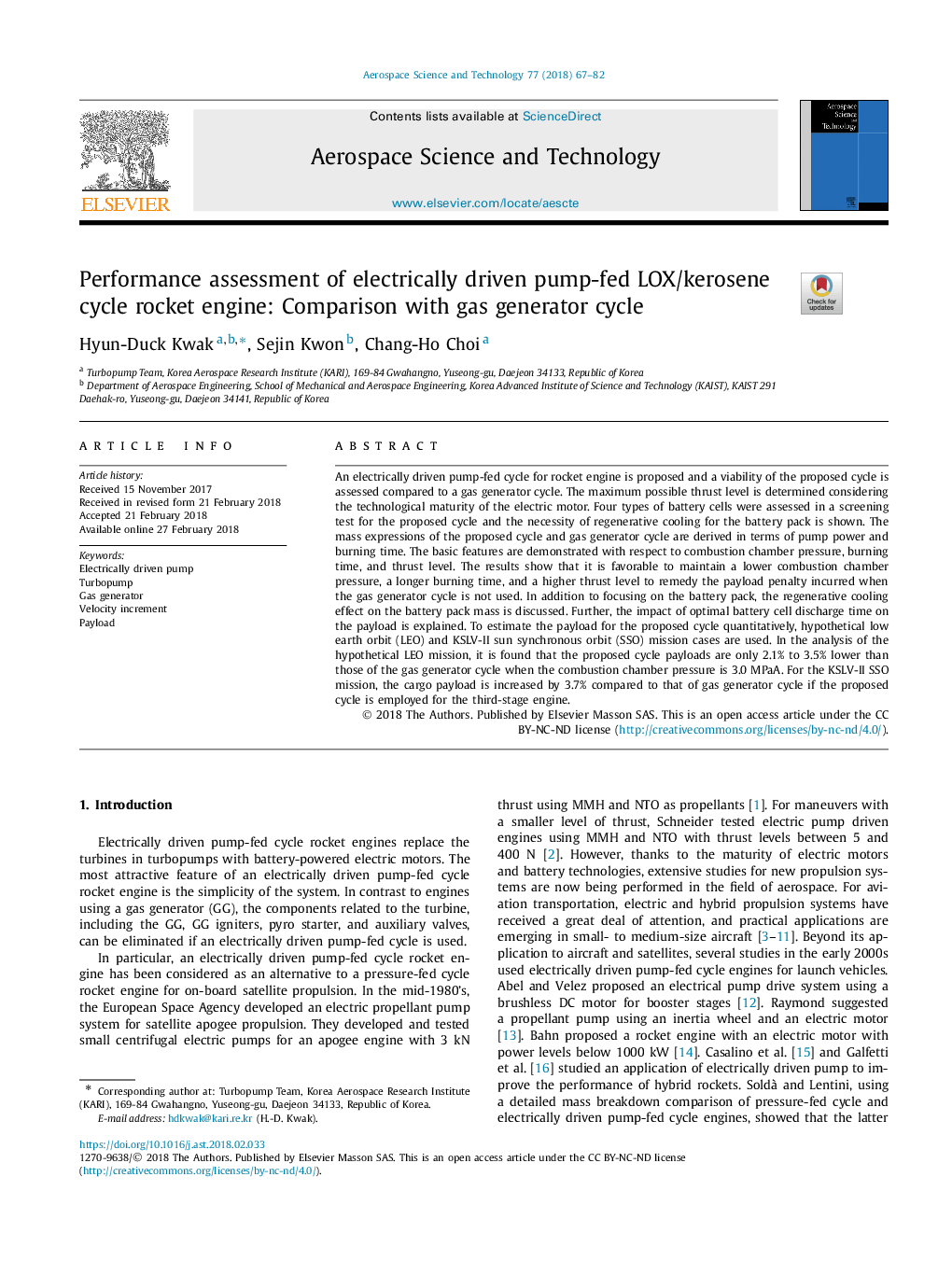| Article ID | Journal | Published Year | Pages | File Type |
|---|---|---|---|---|
| 8057610 | Aerospace Science and Technology | 2018 | 16 Pages |
Abstract
An electrically driven pump-fed cycle for rocket engine is proposed and a viability of the proposed cycle is assessed compared to a gas generator cycle. The maximum possible thrust level is determined considering the technological maturity of the electric motor. Four types of battery cells were assessed in a screening test for the proposed cycle and the necessity of regenerative cooling for the battery pack is shown. The mass expressions of the proposed cycle and gas generator cycle are derived in terms of pump power and burning time. The basic features are demonstrated with respect to combustion chamber pressure, burning time, and thrust level. The results show that it is favorable to maintain a lower combustion chamber pressure, a longer burning time, and a higher thrust level to remedy the payload penalty incurred when the gas generator cycle is not used. In addition to focusing on the battery pack, the regenerative cooling effect on the battery pack mass is discussed. Further, the impact of optimal battery cell discharge time on the payload is explained. To estimate the payload for the proposed cycle quantitatively, hypothetical low earth orbit (LEO) and KSLV-II sun synchronous orbit (SSO) mission cases are used. In the analysis of the hypothetical LEO mission, it is found that the proposed cycle payloads are only 2.1% to 3.5% lower than those of the gas generator cycle when the combustion chamber pressure is 3.0 MPaA. For the KSLV-II SSO mission, the cargo payload is increased by 3.7% compared to that of gas generator cycle if the proposed cycle is employed for the third-stage engine.
Keywords
Related Topics
Physical Sciences and Engineering
Engineering
Aerospace Engineering
Authors
Hyun-Duck Kwak, Sejin Kwon, Chang-Ho Choi,
